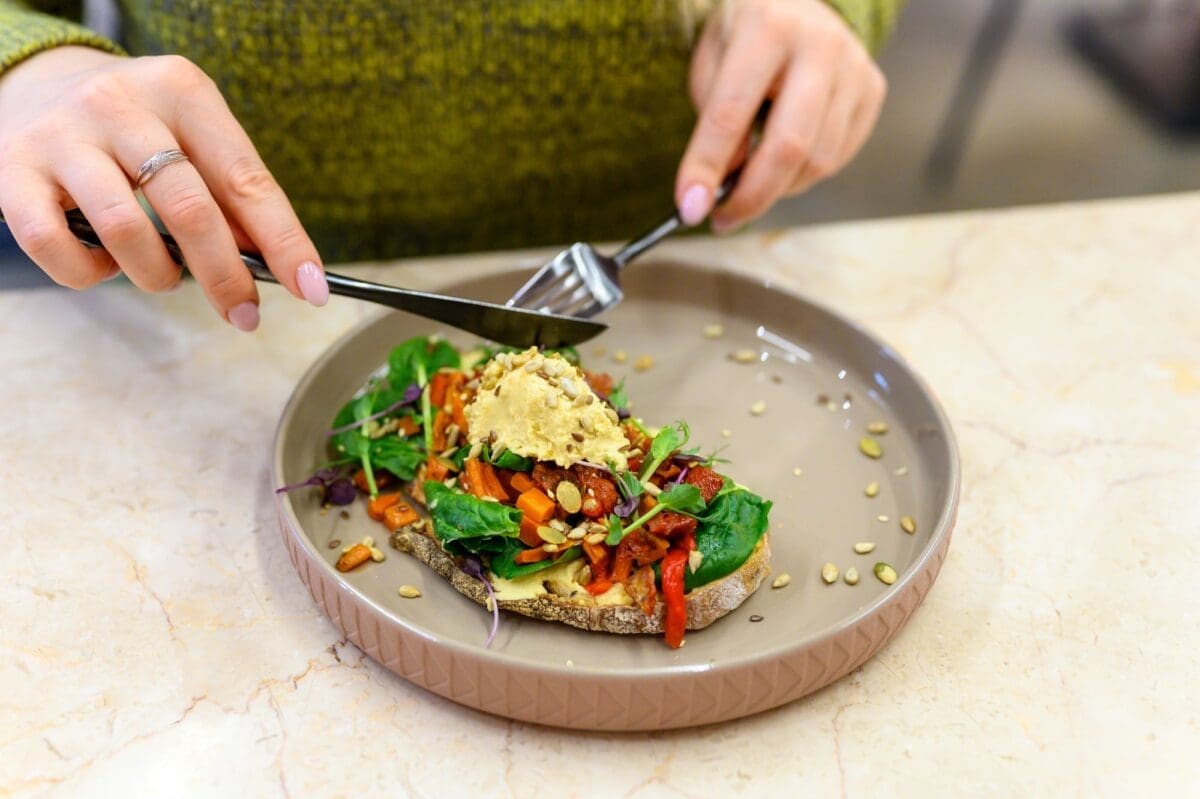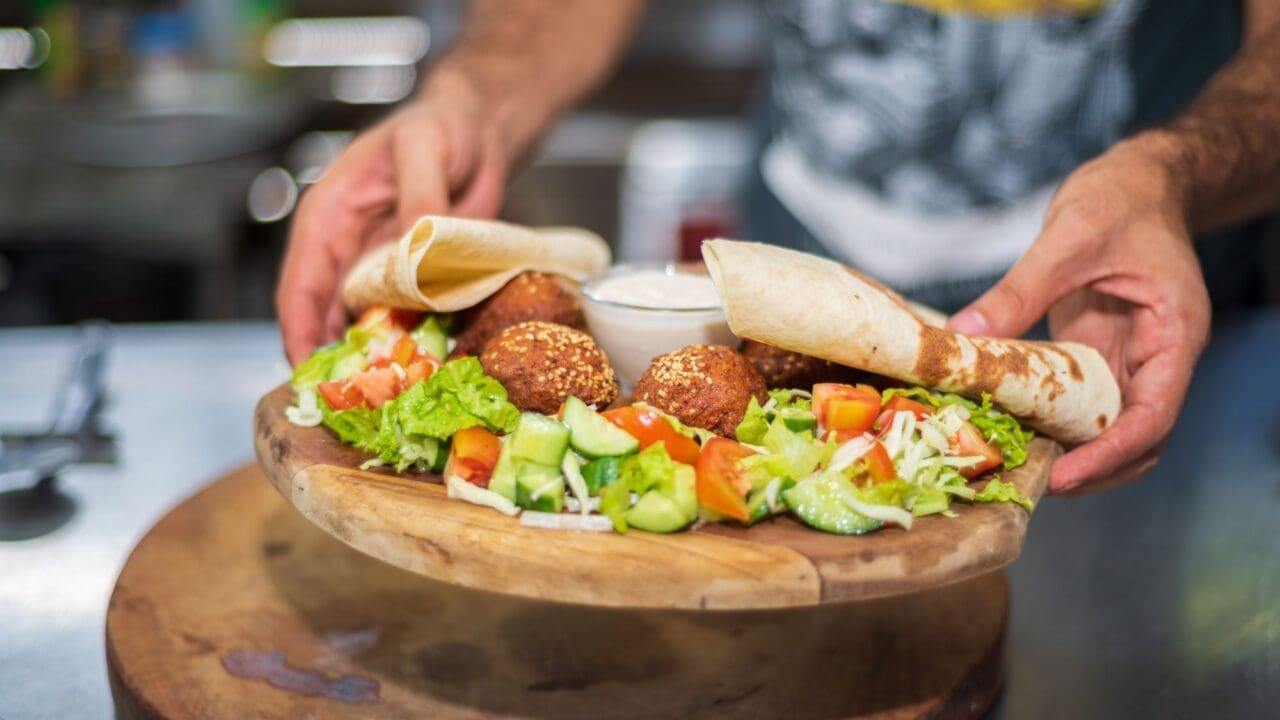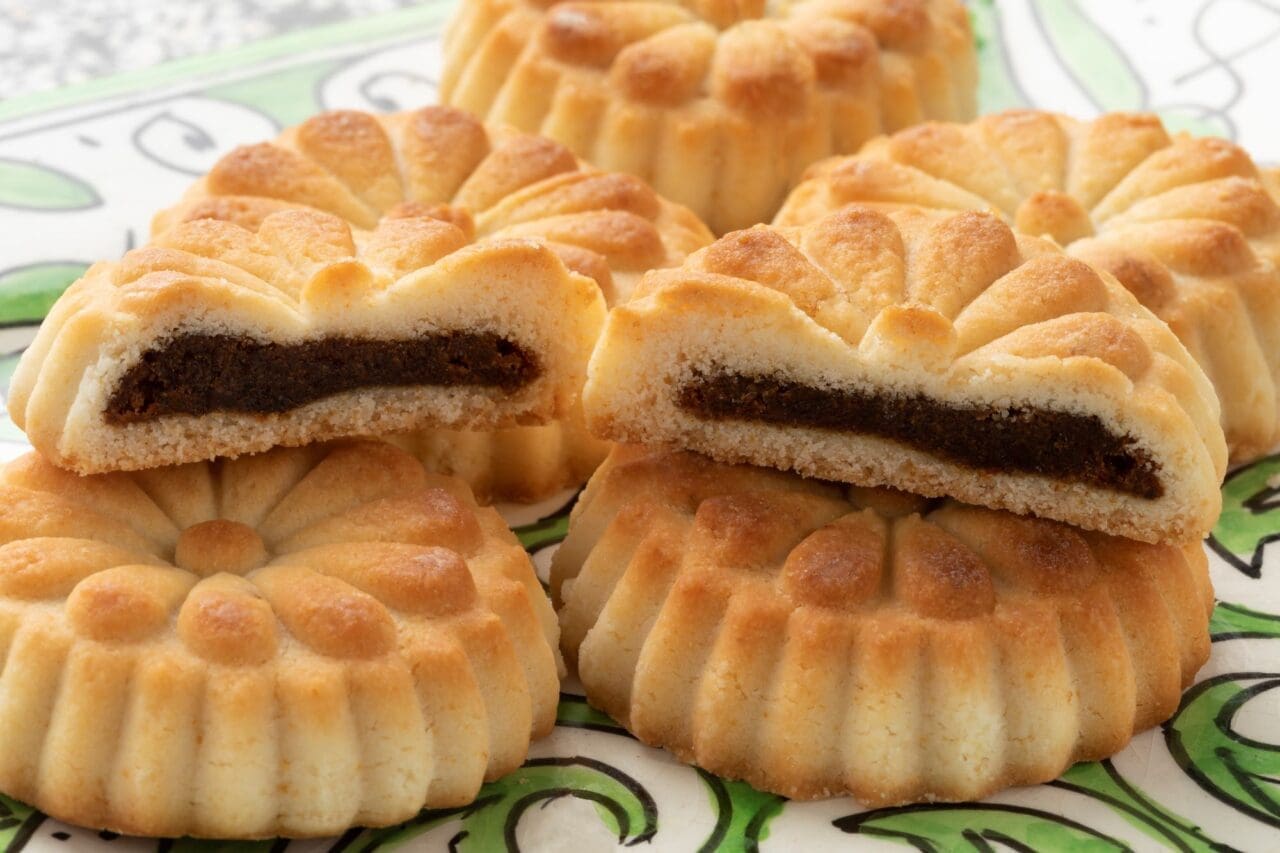15 Authentic Lebanese Food Recipes to Make at Home

Are you looking for a new way to spice up your homemade meals? How about trying a new cuisine? One cuisine that should be on your list is authentic Lebanese food.
Lebanese cuisine is known for its delicious and flavorful dishes that are a must-try for every food lover. In this article, we will provide you with 10 authentic Lebanese food recipes that you can easily make at home.
Looking for authentic food recommendations? Don’t miss these related articles!
Authentic Mexican Cuisine: 10 Traditional Dishes You Must Try in Mexico
Traditional Japanese Dishes: 15 Authentic Foods You Must Try in Japan
15 Authentic Lebanese Food Recipes to Spice up Your Homemade Meals
Lebanese Hummus
Hummus is a renowned Mediterranean cuisine. It is one of the top traditional Lebanese dishes. It is a creamy dip made from chickpeas, tahini, garlic, and lemon juice. To make Lebanese hummus, start by soaking dried chickpeas overnight. Cook the chickpeas until they are tender, then blend them with tahini, garlic, lemon juice, and salt. Serve with pita bread or fresh vegetables.

Tabbouleh
Tabbouleh is a refreshing Lebanese salad made with parsley, tomatoes, onions, mint, and bulgur wheat. To make tabbouleh, start by soaking bulgur wheat in water until it is soft. Mix the bulgur wheat with chopped parsley, tomatoes, mint, onions, lemon juice, and olive oil—season with salt and pepper to taste.
Fattoush
Fattoush is another Lebanese salad packed with flavor. It is made with lettuce, tomatoes, cucumbers, onions, and pita chips. To make fattoush, start by toasting pita bread in the oven until it is crispy. Mix the pita chips with chopped lettuce, tomatoes, cucumbers, onions, parsley, and mint. To finish it up, use a dressing of lemon juice, olive oil, and sumac.
Kibbeh
Kibbeh is a Lebanese meatball made with ground beef or lamb and bulgur wheat. To make kibbeh, start by soaking bulgur wheat in water until it is soft. Mix the bulgur wheat with ground beef or lamb, onions, and spices. Form the mixture into balls and fry until golden brown.

Kafta
Kafta is a Lebanese kebab made with ground beef or lamb, onions, and spices. To make kafta, mix ground beef or lamb with chopped onions, parsley, and spices. Then, create sausage-like shapes from the mixture and grill or fry until cooked through.
Shawarma
Shawarma is a Lebanese street food made with marinated meat, usually chicken or beef, cooked on a spit. To make shawarma, marinate the meat in a mixture of garlic, lemon juice, and spices. Cook the meat on a spit until it is tender and juicy. Serve with pita bread, hummus, and fresh vegetables.
Falafel
Falafel is a vegetarian Lebanese dish made with ground chickpeas, onions, and spices. To make falafel, blend chickpeas, onions, garlic, and spices in a food processor. Form the mixture into balls and fry until golden brown. Serve with pita bread, hummus, and fresh vegetables.

Moutabal
Moutabal is a Lebanese dip made with roasted eggplant, tahini, garlic, and lemon juice. To make moutabal, roast eggplant until it is tender. Blend the eggplant with tahini, garlic, lemon juice, and salt. Serve with pita bread or fresh vegetables.
Sfiha
Sfiha, also referred to as sfeeha, is a Lebanese meat pie made with ground beef or lamb, onions, tomatoes, and spices. To make sfiha, mix ground beef or lamb with chopped onions, tomatoes, and spices. Form the mixture into small circles and bake until golden brown.
Maamoul
Maamoul is a Lebanese dessert made with semolina flour, butter, and a filling of dates or nuts. To make maamoul, mix semolina flour with butter and knead until it forms a dough. Form the dough into small circles and fill with dates or nuts. Bake until golden brown.

Man’oushe
A breakfast favorite, Manoushe, is a Lebanese flatbread adorned with za’atar (a blend of thyme, sumac, sesame seeds, and salt) and olive oil. Bake it until golden and enjoy this aromatic delight on its own or paired with labneh for a morning taste sensation.
Lebanese Mujadara
A humble yet comforting dish, Mujadara combines lentils, rice, and caramelized onions. Simple yet hearty, this dish is packed with earthy flavors and makes for a satisfying meal, especially when accompanied by a dollop of yogurt.
Knafeh
Saving the best for last, indulge in Kanafeh, a luscious dessert made of shredded phyllo dough, sweet cheese, and fragrant sugar syrup. Baked until golden and crispy, this dessert is a sweet symphony that concludes your Lebanese culinary adventure on a high note.
Fatteh
Fatteh is a textural masterpiece, layering crispy pita bread with tender chickpeas, tangy yogurt, and the rich decadence of browned butter and pine nuts. Each bite is an adventure, the contrasting textures dancing on your tongue as the creamy yogurt mingles with the savory chickpeas and the nutty crunch of pine nuts. Fatteh is a celebration of simple ingredients transformed into a dish of pure comfort and satisfaction.
Baba Ghanoush
This smoky eggplant puree is a revelation for the senses. Roasted eggplants surrender their creamy flesh, infused with the heady aroma of charcoal and garlic. Tahini and lemon juice add tangy notes, while a sprinkle of pomegranate seeds jewels the dish with pops of sweetness and tartness. Baba ghanoush is pure magic on pita bread, but don’t be afraid to get creative – it’s fantastic as a dip for crudités, dolloped on roasted vegetables, or even swirled into pasta.

Final Word
Ready to bring the world of authentic Lebanese dishes to your kitchen? With the above recipes, you can start planning for your next meal. From the zesty freshness of Tabbouleh to the creamy indulgence of hummus and the crispy delight of Falafel, these recipes serve as a culinary gateway into Lebanon’s rich heritage. Don’t be intimidated – many dishes like tabbouleh, a refreshing herb salad, or fatteh, a layered delight of pita and chickpeas, are surprisingly simple to create.
With accessible ingredients and straightforward techniques, recreating these dishes at home becomes a delightful journey, inviting you to savor the essence of Lebanon’s vibrant culinary traditions in your own kitchen.
FAQ
Can I make Lebanese food at home without special equipment?
Absolutely! While a food processor makes hummus smoother and a grill adds char to kafta, most Lebanese dishes require simple kitchen tools. A blender, sharp knives, and a good baking pan are your core allies. Don’t let fancy equipment hold you back from culinary adventures!
Is Lebanese cuisine spicy?
Lebanese cuisine is more about rich flavors than intense spiciness. Garlic, herbs, olive oil, and a blend of spices like cinnamon, nutmeg, and allspice are common, offering a nuanced taste profile rather than overwhelming heat.
What makes Lebanese cuisine unique?
Lebanese cuisine is well known for its fresh ingredients, vibrant flavors, and the art of mezze – a collection of smaller dishes served as appetizers or part of a meal, encouraging communal dining and sharing.
Are there vegan options available in Lebanese food?
Yes! Hummus, baba ghanoush, tabbouleh, mujadara, and lentil soup are all naturally vegan. Many other mezze can be easily adapted by using tahini instead of yogurt and vegetable broth instead of chicken stock. Lebanese food is surprisingly vegan-friendly, so explore and enjoy!
What are some traditional Lebanese desserts?
Indulge in Lebanese sweets like Kanafeh (shredded phyllo pastry with sweet cheese and syrup), Ma’amoul (filled shortbread cookies), Baklava (layers of filo pastry with nuts and honey), and Ashta (clotted cream used in various desserts).

